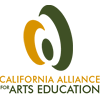Historical Context for Arts Education in California
Since the 1970s, there has been an erosion of arts instruction in the California public schools. The Ryan Act of 1970 narrowed the scope of elementary teacher preparation to the exclusion of the arts, and later in that decade Proposition 13 decimated the property taxes available to local schools. Districts were forced to cut staff and programs, hitting the arts hard. Although there have been several bold district- and countywide initiatives to counteract the erosion, the trend has not showed signs of reversal – until recently.
The last several years have seen a growing resolve among educators and policymakers to assure the place of a solid arts education in the nation's schools. One objective of the No Child Left Behind Act of 2001 is "to support systemic education reform by strengthening arts education as an integral part of the elementary school and secondary school curriculum."1 In addition, the legislation aims to "ensure that all students meet challenging content standards and challenging state student academic achievement standards in the arts."
The arts are critical to an educational policy that is devoted to the teaching of basic academic skills and life-long learning capacities with the goal of truly preparing all children for success after high school regardless of gender, age, economic status, physical ability or learning ability. A systematic, substantive and sequential visual and performing arts curriculum addresses and develops ways of thinking, questioning, expression and learning that complement learning in other core subjects — but which is unique in what it has to offer.
Funding school arts programs and providing time in the school day for arts instruction are essential. The visual and performing arts provide avenues of expression and appreciation of our world culture that no other curricular areas do, and are a necessary part of any child's educational training and experience. In a state as diverse as California, the arts are a cornerstone to achieving cultural literacy, leading to shared understanding and tolerance of differences. They also develop skills and abilities that are crucial for students entering into many vocational areas after high school.
Existing State laws mandate arts education in California for pupils in grades 1 through 12. As stated in Section 51210 of the California Education Code, “the adopted course of study for grades 1 to 6… shall include instruction … in visual and performing arts including dance, music, theatre and visual arts, aimed at the development of aesthetic appreciation and the skills of creative expression.” Section 51220 of the California Education Code identifies a similar course of study for grades 7 to 12.
Further, as mandated in Education Code Section 60605.1, the State Board of Education adopted voluntary content standards in dance, music, theatre and visual arts in 2001. The Code states that content standards are intended to provide a framework for programs that a school may offer. The arts content standards are divided into five strands, which include artistic perception; creative expression; historical and cultural context; aesthetic valuing; and connections, relationships and applications.
1 No Child Left Behind Act of 2001: Reauthorization of the Elementary and Secondary Education Act. Pub. L. No. 107-110 (H.R. 1).







